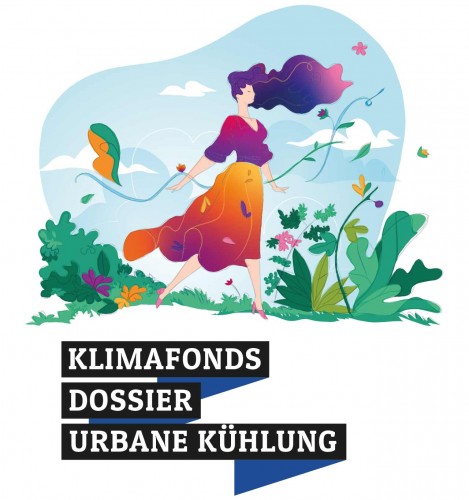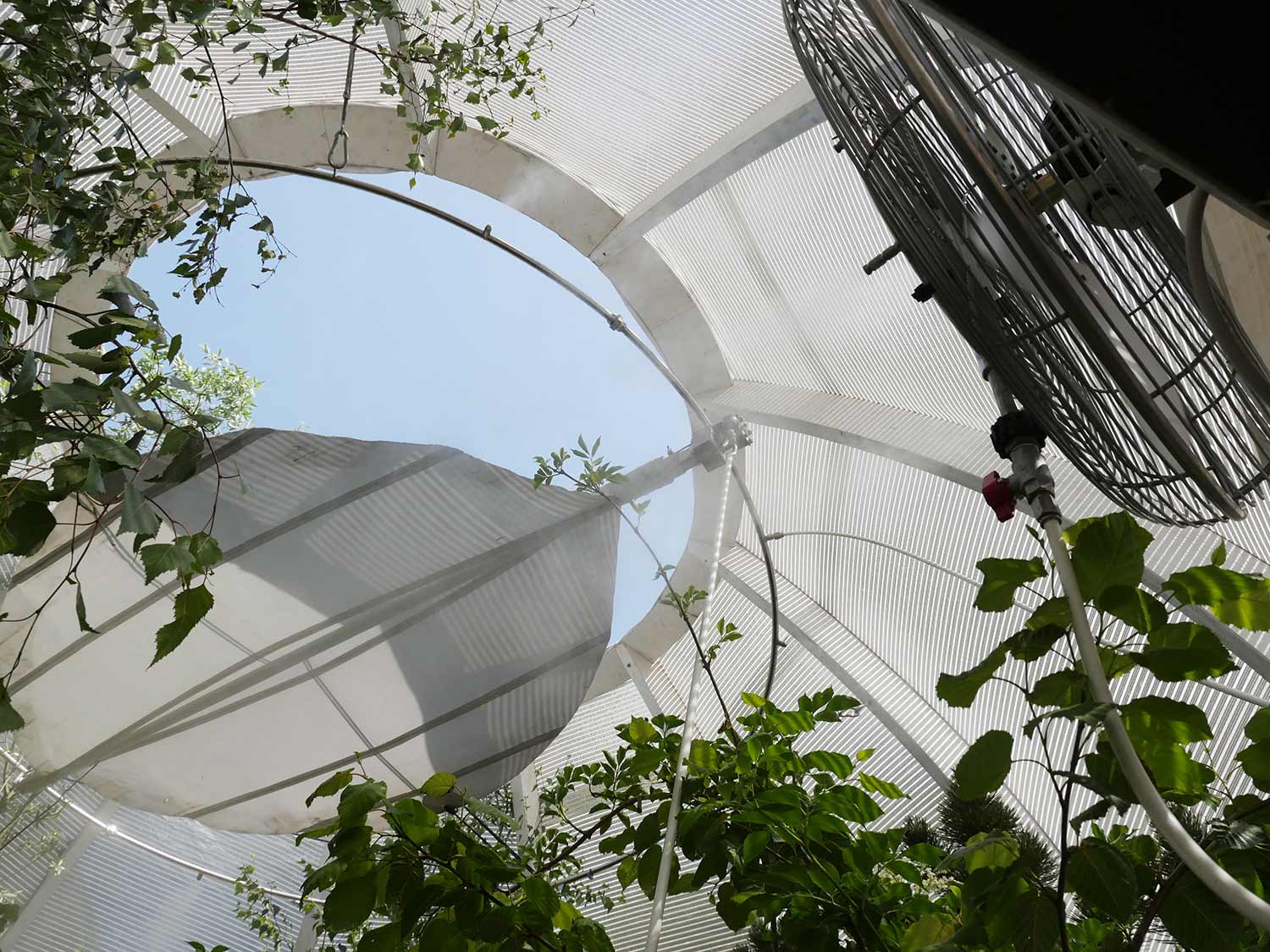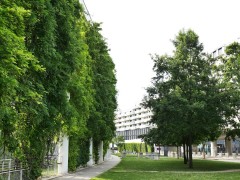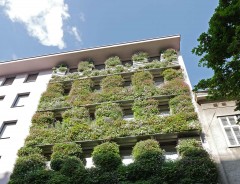Proceeding urbanisation plays a major role in regional and global warming. New concepts, technologies and planning tools are required for sustainable, climate-sensitive urban development. Climate change and the microclimate in urban areas are closely linked. Cities consume a great deal of energy and resources and emit high levels of CO2. They are also amongst the critical areas where the effects of climate change are most noticeable. Alongside air pollution, dust and noise, there are also extreme weather events – occurring more frequently due to climate change – which all have a negative impact on the health of residents and their quality of life. Research and development activities for sustainable cities are targeted towards advancing Smart City solutions that protect the environment and resources and at the same time increase the capacity of urban systems to adapt to climate change, in order to improve the living conditions in urban spaces. User participation, for example through Living Labs, plays an important role in the development and implementation of new concepts and technologies for a better urban climate.
Heat islands in the city
One of the key microclimatic problems in urban areas is the increase in temperature caused by the urban heat island (UHI) effect. Cities have climates that differ fundamentally from their surrounding areas. High-density construction and a high proportion of sealed ground surfaces mean that cities have a much larger surface area than less populated regions. During the day, roofs, facades and sealed surfaces absorb more solar radiation and thus heat, which is stored in the city’s building structures and released again at night. The lack of vegetation and reduced air circulation gives rise to so-called heat islands. Due to the high level of impermeability, rainwater in the city is channelled away through networks of drains and sewers. Cooling through ground evaporation is therefore also greatly reduced. Temperature differences between the city and the surrounding area can be significant, especially at night.
For elderly people, the chronically ill, children and the socially disadvantaged, extreme heatwaves can cause serious health issues. Another problematic effect of urban overheating is the growing demand for energy to cool and ventilate buildings.
Urban Greening
Larger, linked green spaces in urban areas, such as parks, grassed areas, green corridors, community gardens, green roofs and facades, tree planting, rain gardens etc., counteract the consumption of land and soil sealing, improve the microclimate and effectively reduce the urban heat island effect. At the same time, they help to diminish air pollution, noise, dust and carbon dioxide emissions. Green public spaces are important for social interaction and enhance the quality of life for city dwellers.
Improving the urban climate
When planning districts and urban infrastructure, city authorities now have to consider climate models in order to apply suitable strategies for adapting to anticipated changes in the climate. In Austria, there are numerous R&D projects under way to develop innovative concepts, tools and solutions for sustainable cities. Targeted measures – both high-tech and low-tech – can help to reduce the extreme heat stress in cities. An important aspect of climate-sensitive urban planning is the creation of cool oases, for example through green infrastructure, facade and rooftop greening, as well as integrating waterbodies. Another research focus is to improve the heat-radiating properties of buildings and surfaces through the use of reflective colours and suitable materials.
“City of Tomorrow” and “Smart Cities Demo – Living Urban Innovation” are programmes initiated by the Federal Ministry for Transport, Innovation and Technology and the Climate and Energy Fund, to support sustainable developments and integrated concepts for smart, resilient urban development and the implementation of “green” and “blue” infrastructure measures. Key elements are the involvement of city dwellers, and networking and cooperation between policymakers, business, research institutes and administrative bodies.

Background information, reports, interviews, expert commentaries etc. on the topic of “Urban cooling” can be found in the current dossier of the Climate and Energy Fund. (in German)
www.klimafonds.gv.at/dossier/urbane-kuehlung
Rising temperatures in Austria
By 2050, average temperatures in Austria are forecast to be more than 2 °C higher than in the 1980s. Hot and very dry summers are expected. In 2018 several regions in Austria recorded three times more heat days
(with temperatures of at least 30 °C) in comparison to the long-term average. The city centre of Vienna recorded 42 hot days.
Sources: Central Institution for Meteorology and Geodynamics (ZAMG), 2018,
www.oesterreich.gv.at/themen/bauen_wohnen_und_umwelt/klimaschutz/



